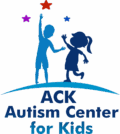Speech Therapy Program & Occupational Therapy in Vaughan includes aba therapists and psychotherapy. Autism ABA alternative by autism center Vaughan offers speech therapy and Language therapy for ADHD for kids of all ages to help them achieve their communication goals.
Table of Contents
Speech and Language Therapy for Autism
Speech and language therapy is crucial for children with autism, as it helps them develop essential communication skills. Therapists work on improving both verbal and non-verbal communication, enabling children to express their needs, socialize with others, and reduce frustration caused by communication barriers. Tailored interventions target the specific needs of each child, making speech and language therapy a vital component of autism support.
Language therapy for ADHD and Speech Therapy for ADHD
Children with ADHD often face challenges in communication due to impulsivity, inattention, and hyperactivity. Speech therapy addresses these issues by helping them improve their listening skills, follow conversations, and express themselves clearly. Through structured activities, speech therapists teach children how to organize their thoughts and communicate more effectively, which enhances their overall social interactions and academic performance.
Communication Challenges in Autism
Autism is often accompanied by significant communication challenges, including difficulties in understanding and using language. These challenges can manifest in various ways, such as delayed speech development, limited vocabulary, and trouble interpreting non-verbal cues. Speech and language therapy focuses on overcoming these obstacles by introducing alternative communication methods, such as picture exchange systems, and by enhancing the child’s ability to interact with others.
Speech and Language Therapy for Communication Challenges
Speech Therapy & Occupational Therapy
speech therapy vs occupational therapy-What is the difference between speech therapy and occupational therapy?
Difference Between Speech Therapy and Occupational Therapy
Both speech therapy and occupational therapy (OT) are essential interventions for children with autism or developmental delays, but they target different areas of growth and development.
Speech Therapy:
Focuses on communication skills, both verbal and non-verbal.
Addresses issues related to speech articulation, language comprehension, social communication, and sometimes swallowing difficulties.
Speech therapists help children improve their ability to express themselves, understand others, and communicate effectively in social settings.
For example:
A speech therapist might work on pronunciation, helping a child form words clearly.
They also address pragmatic language skills, which involve understanding and using language appropriately in different social contexts (e.g., how to greet others or ask questions).
Occupational Therapy (OT):
Primarily targets fine motor skills, sensory integration, and helping children become more independent in daily activities.
OT focuses on improving a child’s ability to perform tasks like dressing, eating, writing, and playing by developing strength, coordination, and sensory processing.
It also helps children manage sensory sensitivities (over or under-responsiveness to stimuli) that can affect their ability to engage with the world.
For example:
An OT might help a child develop hand strength and coordination for writing or buttoning a shirt.
They may also address sensory challenges, such as a child being overly sensitive to noise or touch.
How Autism Center for Kids Can Help Using Psychotherapy
At the Autism Center for Kids, psychotherapy is used alongside speech and occupational therapy to address emotional, behavioral, and cognitive aspects of a child’s development. Here’s how they integrate psychotherapy:
Psychotherapy for Emotional Regulation:
Through methods like Cognitive Behavioral Therapy (CBT), therapists help children with autism manage emotions, cope with anxiety, and develop better social interactions. These are crucial for reducing stress that may arise from communication or sensory difficulties.
Enhancing Communication through Play Therapy:
Play therapy and Floortime techniques are used to engage children in a way that promotes emotional connection, which can positively impact both speech and sensory integration.
Parent and Family Support:
The center provides parent counseling to guide families on how to support their child’s development at home, offering strategies that reinforce skills learned in speech and occupational therapy.
By combining speech and occupational therapies with psychotherapy, the Autism Center for Kids creates a holistic approach to helping children with autism thrive across multiple areas of their development.
Error: Contact form not found.





You must be logged in to post a comment.